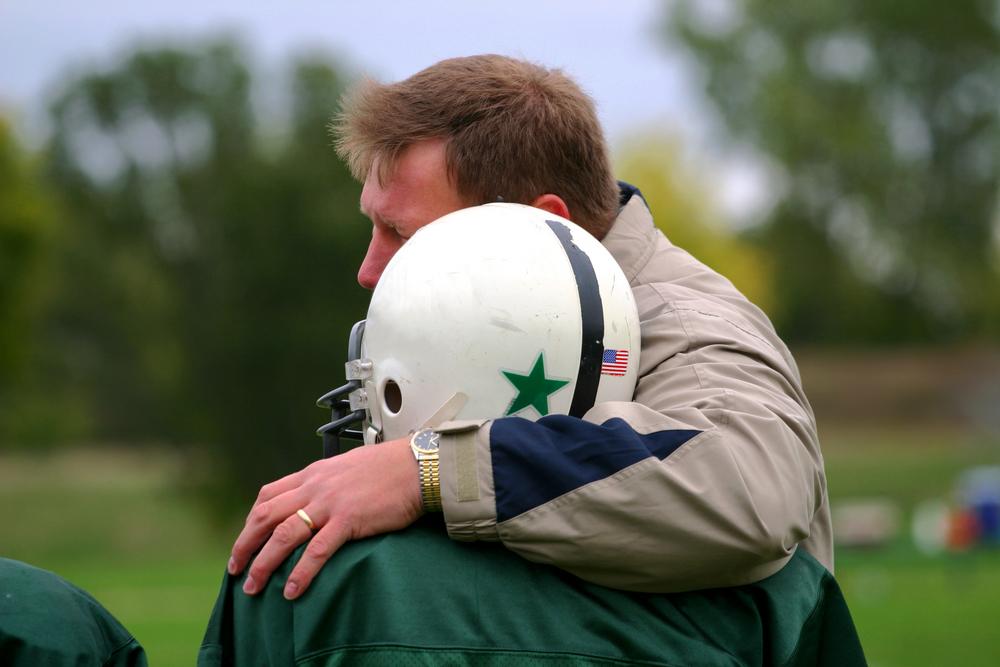 Content Warning: This article contains mentions of bullying and abuse and/or assault.
Content Warning: This article contains mentions of bullying and abuse and/or assault.
This last Games cycle has taught many athletes and coaches the importance of prioritizing mental health as much as we prioritize physical health in sport. And for some athletes, that may mean sitting out major competitions—as gymnast Simone Biles elected to do in the Tokyo 2020 Games—and it could even mean quitting a team altogether. Here, TrueSport Expert Nadia Kyba, a social worker and expert in conflict resolution, helps parents understand when it’s important to say yes to your athlete quitting the team, and what questions you should be asking to best support them.
Make sure there’s no danger
It’s important to approach the topic of your child wanting to quit a team with caution. Before we touch on the nuances of quitting due to goal misalignment or personal dissatisfaction, as a parent, it’s critical that you ascertain that your child’s desire to quit isn’t rooted in abuse from a coach or other adult, or bullying from teammates. Start by making sure that there are no signs of abuse or bullying, says Kyba.
Your child should know that they can talk to you about anything, and that you have their best interests and safety at top of mind—not their national ranking or scholarship potential. If there is an issue of abuse or bullying, that’s when your child needs you to step in and protect them by seeking the appropriate help.
Understand your position and interest—and your child’s
 Assuming that abuse or bullying isn’t the problem, the next step is to pause and reflect on why your child wants to quit, as well as your personal reasons for wanting them to stay on the team. “Your position is a set solution to a problem and your interests are your needs and what is important to you,” Kyba explains. “But your position and interests may differ from that of your child and it’s critical that you understand your motivations as well as theirs as you discuss the next steps.”
Assuming that abuse or bullying isn’t the problem, the next step is to pause and reflect on why your child wants to quit, as well as your personal reasons for wanting them to stay on the team. “Your position is a set solution to a problem and your interests are your needs and what is important to you,” Kyba explains. “But your position and interests may differ from that of your child and it’s critical that you understand your motivations as well as theirs as you discuss the next steps.”
For example, your interest might be in your child getting an athletic scholarship, which means your position is likely to be ‘toughing it out’ and staying with the team. However, your child’s interest may be that he wants to spend more time with friends, and his position is that quitting the team allows him to do that. Neither position or interest is bad or wrong, but if you don’t try to see things from your child’s point of view, communication will be much harder.
Look for other solutions
Ask your child to get creative and list a few ways his or her needs can be met while still staying active. Maybe a solution is finding another team (a travel team versus a school one) or even trying a different sport altogether.
For example, Kyba’s daughter struggled when she wanted to quit soccer. “She loved the sport and all the benefits of being active, but found she was overwhelmed by pressure to succeed,” Kyba recalls. “She was also worried about what other people would think about her and if they would judge her for quitting.”
Eventually, after many family discussions, Kyba’s daughter decided to move to a recreational league and had a blast once she let go of the pressure. Now, as an adult, she still plays recreational soccer. “I think if she just stopped playing soccer altogether—as she at the time saw as the only solution—she wouldn’t be having fun, staying active, and playing today as a young adult. And really, that is the ultimate goal with sport,” Kyba concludes.
Let the decision rest with them
 Ultimately, you can listen, you can discuss, and you can present alternatives—but let your child choose for him or herself. “Letting kids make their own decisions is so important from a developmental standpoint, and that’s something that we’ve moved away from allowing as parents,” Kyba says. “When kids don’t have agency, when they aren’t able to make their own decisions, they feel really anxious and they don’t know how to make their own decisions later in life.”
Ultimately, you can listen, you can discuss, and you can present alternatives—but let your child choose for him or herself. “Letting kids make their own decisions is so important from a developmental standpoint, and that’s something that we’ve moved away from allowing as parents,” Kyba says. “When kids don’t have agency, when they aren’t able to make their own decisions, they feel really anxious and they don’t know how to make their own decisions later in life.”
As a parent, Kyba suggests that instead of looking at yourself as the manager or the boss, look at yourself as a “consultant” for your child. Your job is to ask questions about why it is they want to quit, but the final decision rests with them. While it may seem like a decision that you disagree with in the moment, that decision allows your child to develop autonomy and grow as an individual.
Try to look for an alternative—and it may not be a team
While children don’t necessarily need to play a sport on a team to stay happy and healthy, keeping a child physically active is important. Your child shouldn’t be quitting a team and instead spend 10 hours a week in front of the TV or computer instead. “It’s so important for kids to stay in sports or find a physical activity that they do enjoy,” says Kyba.
From a health, longevity, and even social perspective, sport has so much to offer. So, while your child should feel comfortable leaving a team if they decide to, you can try to help them find a new activity. Maybe they need a break from team sport and can try mountain biking with you. Or maybe another team sport is more appealing.
_______________
Takeaway
Ultimately, your child should feel comfortable talking to you about their desire to quit a team, and they should feel supported in their ability to make the right decision. It may not be a decision that you agree with in the moment, but if you have a calm conversation, ask questions, and look at a range of solutions, then your child will feel empowered long after this current season is over.



